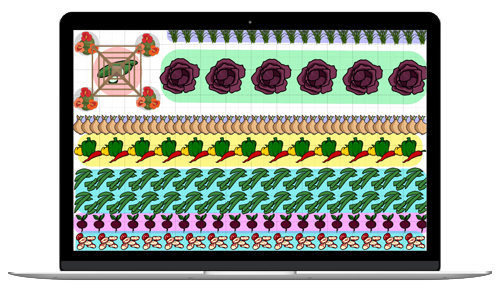
How to plant flowers in containers (and vegetables, too)
The Almanac Garden Planner - Use It Free for 7 Days!
Plan your 2025 garden with our award-winning Garden Planner.
ADVERTISEMENT
Ann Buettner - I googled 'polymer'; found out what it is, what it's made of, and how to use it in your plants.
Can you explain what is a polymer? Is the layer of newspaper fluffed up, or compacted slightly? I am very interested in this method.
Find your suggestions helpful . I have developed gardening as my hobby. Will be happy to receive your guidance occasionally.
I appreciate the additional explanation about the polymer. - Where can you buy it?
When I use polymer in the Hanging basket, I Soak the beads in warm water that has plant food in it. I use the weaker solution. If you don't fill the beads with water at first planting; they will then fill up with water and tend to plop out of the potting soil and basket, thus looking rather ugly. (You will also see how much you can Really use in your size hanging basket.) Usually one measured teaspoonful makes 1 quart of water logged beads. But you don't want to use that much in a hanging basket. 1/2 of that will do nicely. Mix it slightly in the middle layer along with the Fertilizer beads. Spread this out evenly. Then use the potting soil on top of this mixture.
Make sure you leave room for the plants. Sometimes I leave a 16 ounce sour cream or cottage cheese container in the middle before place the potting soil in, to leave myself room for the plant to go in to. Pull it out before placing plant in that space. ~ HTH
Robin, Thanks for mentioning the importance of soaking the beads and other tips. Very useful additions! *Catherine
This is really helpful. I wonder why my containers die--they're all just potting soil sitting there. Thanks.


 s own competition (other organisms, disease, etc.). Potting soil can work but is often too heavy. Peat moss is great because it holds moisture and provides air space. Perlite and vermiculite provide additional air space so that the mix isn’t too dense. You can buy the mix or mix it yourself. Most annuals have shallow root systems, so 4 to 8 inches of depth is ample.
s own competition (other organisms, disease, etc.). Potting soil can work but is often too heavy. Peat moss is great because it holds moisture and provides air space. Perlite and vermiculite provide additional air space so that the mix isn’t too dense. You can buy the mix or mix it yourself. Most annuals have shallow root systems, so 4 to 8 inches of depth is ample.








